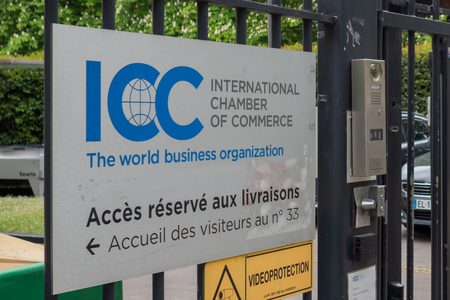Like many areas of the economy, fintech started 2022 on something of a high. After 2021 had seen a bounce back from the lockdown lows of 2020, this year opened with a similar spring in the collective step. Susanne Chishti says that optimism carried through the entire first quarter.
“Research by Innovate Finance shows Q1 2022 saw good results, with $33bn of investment across more than 1,750 deals, which was up 21% for the same period in 2021,” she explains.
In the second quarter, after the effects of the Russian invasion of Ukraine started to be felt, a market correction became apparent. “For Q2 there was $26bn of investment across 1,290 deals, which represented a 19% drop in the amount of capital invested.”
While some investors have remained hesitant since, waiting for “this time’s Lehman Brothers moment”, Chishti remains upbeat. “Overvaluations and inflation take time to fix,” she says. “The economic recovery might be slower, but good companies are founded in difficult economic times. It just might take longer and be at lower valuations.
“But long-term, I am bullish on the global fintech sector, because it’s the future of finance. Fintech has already changed financial services forever and it will have an even bigger impact over the next 10 years.
“New technologies, such as decentralized finance, are creating new business models and that is enabling fintech businesses to tackle some of the biggest opportunities and challenges facing the world.”
Asked to elaborate on what she thinks might be the most significant of these major developments, Chishti picks out three trends she says will shape the future of the industry – embedded finance, green fintech and global financial inclusion.
Payment as a service
The idea behind embedded finance is that in many situations financial services are the means to an end, not the primary need of consumers. “Let’s assume you want to buy a house,” explains Chishti. “This doesn’t mean that you want to buy a mortgage and insurance, but you have to in order to buy the property. These financial services are necessary conditions in the customer journey, not a primary focus. By embedding them into the customer journey, the experience becomes better.”
Embedded finance covers any situation where services such as payments, insurance or lending are built into non-financial brands’ services to deliver a seamless experience. Chishti cites a popular example, “Think of the experience with Uber. When you get out of the taxi, you don’t have to do anything, the payment happens in the background.”
It is this focus on the customer that Chishti says makes embedded finance attractive for business. “The growth potential is clear. It is immensely scalable, with the potential to reach an enormous user base, while maintaining a low cost base. Embedded finance has been exploding in front of our eyes. Forbes forecasts it will grow to $140bn by 2024.”
Embedded finance has been exploding in front of our eyes. Forbes forecasts it will grow to $140bn by 2024.
Chishti’s second trend is green finance. “The financial sector, including fintech, has a huge role to play in delivering the transition to net zero. ESG issues will be increasingly prominent in coming years, combined with technology, innovation platforms and new business models,” she explains.
Pointing to recent research conducted by Fintech Circle, Chishti highlights the financial services sector’s increasing data usage and storage needs resulting from innovations such as artificial intelligence. “Data growth has been enormous, and it is becoming costly financially, but also environmentally. Data centers could end up accounting for 13% of annual global electricity consumption and 6% of all carbon emissions by 2030. Responsible finance businesses have to select 100% renewable energy providers.”
Such ESG requirements are having an impact on fintech strategies and present opportunities for companies to help individuals and companies with carbon accounting on a personal and corporate level. “At the end of the day, we all want to know if we are ‘carbon obese’, so then we can do something about it.”
Global financial inclusion
The third key trend is financial inclusion, something Chishti says matters because it is a global issue, affecting millions of people in both developing and developed economies. “In the UK, for example, 4% of the population – that’s more than two million people – don’t have a bank account. They are in effect excluded from financial services. And it’s a similar situation in the US, where 35 million Americans have no bank account. But also, according to the US Federal Reserve, 40% of Americans don’t have as much as $400 in a bank account, meaning they can easily be financially wiped out if the smallest thing goes wrong.”
Globally, more than two billion people are unbanked. For Chishti, this presents fintech leaders with a huge opportunity to use mobile technology to empower those who may not have a fixed address. “Being able to access micro-loans, build up micro-savings or access micro-insurance options can be transformative,” she says. “The starting point is often in supporting traditional economic activity.”
At the heart of the fintech revolution sits innovation of all kinds, from new thinking on products and services, to entirely new business models, and new ways of engaging customers. And while innovation characterizes the industry, it’s not always the easy option.
“Innovation is lots of fun, but involves hard work to optimize and test,” says Chishti. “It is crucial to validate assumptions and see if this new idea really adds value and that expected outcomes match your internal or external stakeholders.”
The challenge is not a lack of innovation, but finding the most suitable innovation for your own business, or for your investment portfolio, if you are an investor.
Chishti has experienced both pure start-ups and corporate-backed ventures. She explains that managing innovation in a large organization, while easier from a funding perspective, has its own challenges. “Silos exist and existing business heads have a power base and profit centers to defend. But innovation has no boundaries and stretches across the organization. It needs lots of teamwork and often a matrix structure to flourish.”
Being truly innovative depends on a willingness to learn from market and technology trends and adapt and adopt what makes sense. “It’s about leadership and communication,” explains Chishti, “the ability to clearly communicate a vision of the company and why it exists and how it will be even better in the future. This means being able to make difficult decisions, take risks and create a culture where continuous improvements but also quantum leaps forward are possible. And you need an innovation measurement framework with clear KPIs that reward the right behavior and decisions.”
Investors and financial services professionals alike have been inspired by the booming fintech sector and both will have plenty of tough calls to make in coming months and years. They’ll have to select which companies to back and invest in, or which products and services to buy or license.
Again, Chishti sees this as a positive: “Luckily, there are a lot of excellent fintech companies to choose from. The challenge is not a lack of innovation, but finding the most suitable innovation for your own business, or for your investment portfolio, if you are an investor.”
Fintech Circle, in partnership with ITN Productions, will premiere Fintech for Good in London in December. The new film is focused on financial inclusion.













